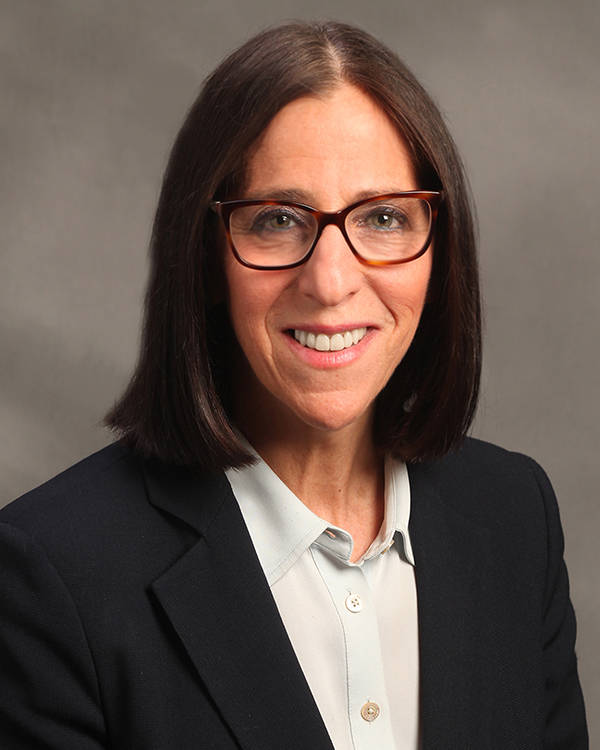The brokerage industry’s advisor force is aging and retiring at a rate faster than it's been able to replace with new advisors. And few have been able to stem the tides.
Wells Fargo Advisors, however, is keenly focused on attracting both experienced and inexperienced advisors, and it's making an ample effort to attract and retain more women. The company is completely reinventing its approach to next generation talent by shifting focus away from the traditional, cold-calling/commission-only model (which excludes many prospectives, such as working mothers who still bear the bulk of family responsbilities and can't take the risk) and onto teaming, mentoring and succession.
To do this, the company has pioneered the creation of five distinct mentoring, salary-based programs designed to open the financial industry to a much more diverse advisor workforce. The idea is to ensure that the company's make-up is representative of today’s America.
The typical financial advisor is a 51-year-old white male, but Wells Fargo Advisors is focusing on attracting new talent with a hiring goal of 20,000 vets by 2020. Its Associate Financial Advisor and Financial Relationship Advisor programs, just to name two for example, have 36 percent women and are 48 percent diverse—meanwhile, the industry average hovers around 14 percent.
I caught up with Diane Gabriel, head of next generation talent for Wells Fargo Advisors, to learn more about the Next Generation Talent Program and how the company is positioning itself as the best place for both women clients and women advisors.
1. Can you tell me more about the Wells Fargo Advisors' Next Generation Talent Program?
"While head count has traditionally been the focus when it comes to recruiting, we took a step back several years ago to think bigger picture when it comes to evaluating what true success looks like for our advisors and our company.
"Additionally, our advisor force is aging and retiring at a rate faster than we have been able to replace with new advisors. Unfortunately, the recruiting and training models of the past no longer work. It was essentially a survive-and-thrive model where trainees did a lot of cold calling, relying on wealthy friends and depending on some luck. The 100-percent-commission model excluded many people who couldn’t take that risk, and it was tough to recruit from top schools.
"In 2014, we began shifting focus away from the traditional, cold-calling/commission-only model, and pioneering the creation of four distinct mentoring, salary-based programs, designed to open the financial industry to a much more diverse advisor workforce ensuring our company make-up is representative of today’s America."

2. Can you explain all the distinct and innovative programs involved and how they each bring new and diverse advisors to the company?
- Associate Financial Advisor (AFA): "This is an apprenticeship program where an experienced financial advisor (FA) is looking for a new advisor to become a successful part of their team. Typically, the new FA adds a dimension to their practice that is not there today, like a focus on full-balance sheet advice or the next generation client."
- Financial Relationship Advisor (FRA): "This is a salaried-based FA, who is given emerging affluent ($75k-250k) relationships from others in the branch. We are helping new advisors develop practices that put 'clients first always' by providing advice that aligns with a client’s investment objective—and a transparent, professional investment management that looks at a client’s full balance sheet, including income needs."
- Financial Advisor in Training (FAIT): "The FAIT program is a more traditional model that’s generally comprised of established individuals who are interested in a career shift."
- Digital FRAs: "These advisors are salary-based, registered financial advisors who help clients plan their financial futures over the phone. They work as part of a team to help provide solutions for clients that are appropriate for their investment objectives. The FRAs in this channel helps enable WFA’s segmentation strategy of providing clients with the right investment services based on individual needs, and Digital FRAs receive training, hands-on coaching and mentoring to grow their careers."
- Branch Manager Leadership Program (BMLP): "This program attracts a broader range of diverse leaders to the organization. At the onset of the program participants are paired with a host manager for two years. Then, after that, they graduate and become a branch manager."
3. In what ways are you welcoming women of all levels and what efforts are you making to attract and retain women of all levels?
"We are publicizing our Next Generation Talent program both internally to recruit candidates from within Wells Fargo’s other business lines yet also externally through
marketing collateral, recruiting on university campuses, news stories, tradeshows and speaking engagements, to name a few.
"It’s also helpful that we have retention rates for the programs that exceed 80 percent, so we have many candidates referred to the various programs by their managers. In some cases, we even have FAs who refer their own children into the program to follow in their footsteps, so to speak.
"The brokerage industry’s advisor force is aging and retiring at a rate faster than we have been able to replace with new advisors. The 100 percent commission models of the past — based on survive-and-thrive cold calling — have a roughly 80 percent
failure rate. Moreover, it’s excluded many people who can’t or don’t want to take the risk, such as working mothers or people in mid-career changes. And it’s also unattractive to new talent from top schools.
"Additionally, our coaching, teaming and succession programs continue to appeal to experienced, high-quality advisors, and through the adoption of the firm’s best practices, our advisors are building deep client relationships that have helped grow our professional investment management assets. Lastly, Wells Fargo Advisors’ multichannel business model continues to be attractive to advisors who want choices in how they work with us to serve their clients."
4. One of Wells Fargo's goals is to position itself as the best place for both women clients and women. How are you seeing this goal come to fruition?
"We feel good about our pipeline of experienced recruits and the new trainees that are joining advisor teams, and we continue to invest in new ways to train and
mentor new talent. As we look to evolve our business and consider our plans for the future, we continue to invest in resources and technologies that help our advisors better serve their clients. For example, we hired 337 people into our AFA program in the past three years, and we plan to add about 150 more each year.
"Another example, launched last year, is the Multi-Cultural Women of Color Program, which leverages a recruiting marketing plan to encourage ethnically-diverse women of color to consider a WFA career. By offering educational recruiting-style events in major markets, we are developing numerous career prospects and are using such approaches to build our pipeline."
5. Can you talk about the brokerage industry and how it's changed/is changing to include people like working mothers who can't risk the 80 percent failure rate?
"As we evaluated our approach, regulatory changes, shifting demographics, and an aging/retiring advisor-base reinforced what we had already surmised, the traditional models of recruitment were no longer effective.
"The average U.S. advisor is a 51-year-old white male. Compare that to our AFA and FRA programs, which have 36 percent women and 48 percent diverse. I read a statistic in Barron’s that the industry could be short 200,000 as it struggles to replace retiring advisors. Our Next Generation Talent programs helps to solve beyond succession planning but also for attracting and retaining diverse FAs."
6. How have these programs dramatically enhanced diversity already? And what do you anticipate the change will look like in the near future?
"Our AFA and FRA programs have 36 percent women and 48 percent diverse, which is particularly impressive when you consider that the diversity average in the industry is around 14 percent. We expect these numbers to hold strong and steadily increase as we try new ways to recruit talented individuals into these programs and increase our
diversity and inclusion profile."
7. What advice do you have for women interested in the industry but who don't have role models or experience, since the diversity average hovers around just 14 percent?
"I think the best advice I can give is to reach out to us! We are very fortunate to have hired women in just about every line of business and every aspect of field leadership and financial advisory program.
"An easy way to get the conversation started is to complete this
form and mention that you’d like to speak to a female in the Next Gen Talent team about these roles. We are excited to speak to interested candidates and provide suggestions on which program would be the best fit."
--
AnnaMarie Houlis is a multimedia journalist and an adventure aficionado with a keen cultural curiosity and an affinity for solo travel. She's an editor by day and a travel blogger at HerReport.org by night. 
